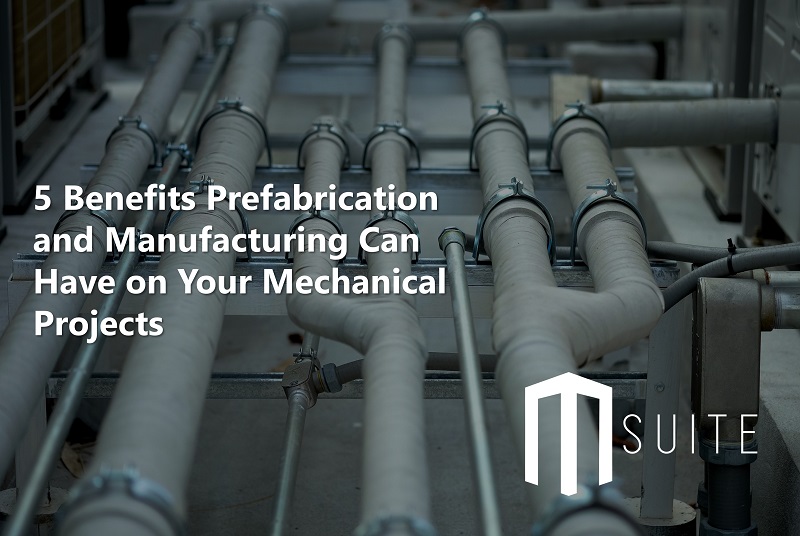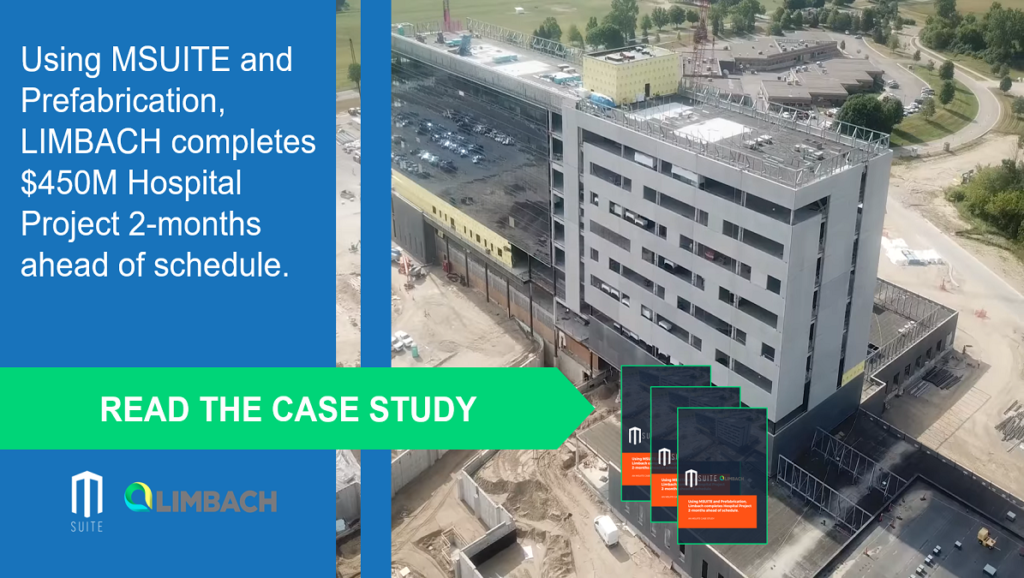The last decade has seen incredible growth with technologies hoping to increase productivity and help teams deliver projects efficiently and profitably. The access to information and ease with which we can communicate has revolutionized most businesses. But, unfortunately, it has also led to individuals expecting immediate results. The construction industry feels the same effects in the accelerated demand for projects to be delivered quickly and with less risk. One shining method is how prefabrication and manufacturing can work together to help mechanical contractors build a better product without the constraints traditionally experienced on every jobsite: on every project.
Technological innovations in prefab and manufacturing have provided us with solutions to innovate. Through collaboration, sharing data, and strong leadership, modular, and prefab construction methods become viable solutions to the traditional drivers of quality, speed, risk, and safety.
Prefab is the offsite construction of building system modules or products in a manufacturing environment, such as a fabrication shop. These building system components can also be combined to create larger multi-trade modular building assemblies benefiting Mechanical, Electrical, and Plumbing trade contractors, to name three.
1. The offsite construction plan requires a vision.
As with any plan, it’s essential to have a vision and collaborate with project stakeholders to begin by answering a few basic questions.
- Utilizing Lean & Design for Manufacturing concepts such as “Choosing by Advantage.”
- What repetitive activities can be moved offsite?
- What aspects, such as safety of the project can be improved offsite?
- How can building modules be routed to optimize long-term maintenance?
- Are there any trades that will have difficulty securing quality labor?
There are many joint opportunities for pre-assembling equipment skids, plumbing rough-in for bathroom groups, horizontal utility distribution, building pumps, and complete central utility plants. In addition, grouping multiple building sub-system components can manufacture multi-trade assemblies into single modules.
The vision and list for potential fabrication opportunities assist in guiding project teams (e.g., design, engineering, trade, supplier, etc.) in the design, project delivery, and assembly processes. For example, up-front planning and coordination for offsite manufacturing mean designers and engineers can easily integrate prefabricating products into the design. In addition, alternative project delivery methods, like design-build, and design-assist, align teams early in the process to help achieve improved collaboration.
2. Making better decisions for managing labor.
The skilled labor shortage is seeing a drop. However, prefab increases construction teams’ productivity and delivers better results with the limited availability of skilled labor. For example, manufacturing multi-trade assemblies for construction can include a reduced staff onsite to install substantial feet of MEP distribution in a single day.
The results can be extraordinary; however, your vision and plan for prefabrication will be challenging to achieve without timely decision-making. In many cases, making timely decisions can easily outweigh the importance of how good the judgment is for the project.
The key to success is understanding all the activities necessary to deliver the manufactured product to the jobsite for a timely installation. Therefore, schedules should include activities, milestones, decisions, and dates to keep the construction team on track.
3. Collaboration is the key to success.
A solid team to execute a successful offsite construction plan is crucial. Partners that can effectively share the vision, plan extensively, and work collaboratively will play a vital role. Diverse experiences and perspectives naturally challenge traditional construction processes to generate innovation. Offsite construction requires the versatility and strength of the project team to execute a successful construction plan.
The most important hard skills include but are not limited to fabrication experience, building information modeling (BIM), and overall construction intelligence. BIM software is a common platform that teams leverage to communicate and document prefabrication concepts. A diverse group that possesses these skills, along with the soft skills mentioned, has the tools to be successful.
4. Improving Labor Management
Prefabrication and manufacturing can move a high percentage of labor activities offsite, substantially increasing the team’s productivity. In addition, fabricating components offsite reduces the volume of tasks and increases worker safety on the jobsite. This also reduces the requirements for having exceptionally skilled workers on the jobsite every day.
One of the most recognized benefits of prefabrication and offsite construction is that it enhances quality control and jobsite safety for trade workers on the jobsite. Components and prefabricated modules are designed and packaged when delivered to the jobsite. Materials are tagged and coded per installation requirements. Material deliveries are organized to reduce overhead tasks and eliminate daily mobilization and demobilization of crew activities and delays caused by the environment. In addition, it also reduces the number of jobsite materials and equipment required for installation. Reducing work and the array of materials on the jobsite means a safer, more efficient working environment.
5. Start earlier on the project.
For mechanical contractors, starting the scope of work earlier in the project and utilizing prefabrication can bring innovation to project delivery compared to traditional construction projects. This results in safer, faster, better quality, and more profitable projects.
Modular and prefabrication construction strategies prove their metal and can significantly improve project outcomes. Establishing a clear vision, leveraging timely decision-making, and creating strong partnerships with project stakeholders will help your team succeed.
In a Dodge Data Survey, the benefits of using model-based prefabrication are indisputable, with an average of 90% of users reporting increased schedule certainty, productivity, and improved quality. If you haven’t considered the possibility of prefabrication, you’re potentially losing out on these invaluable benefits.








